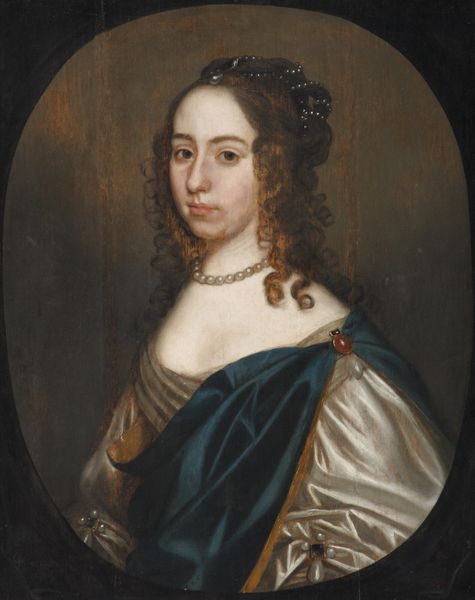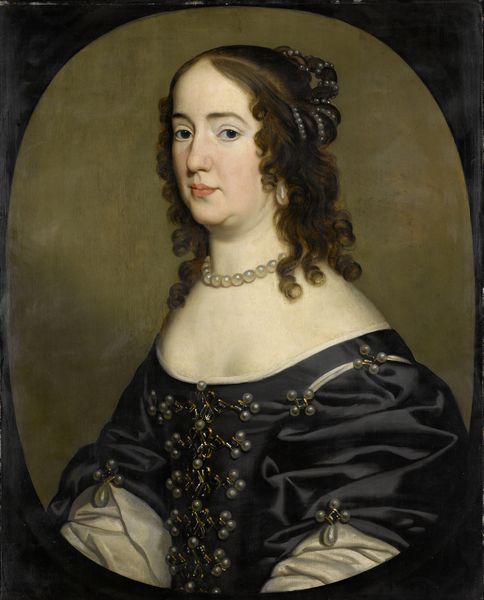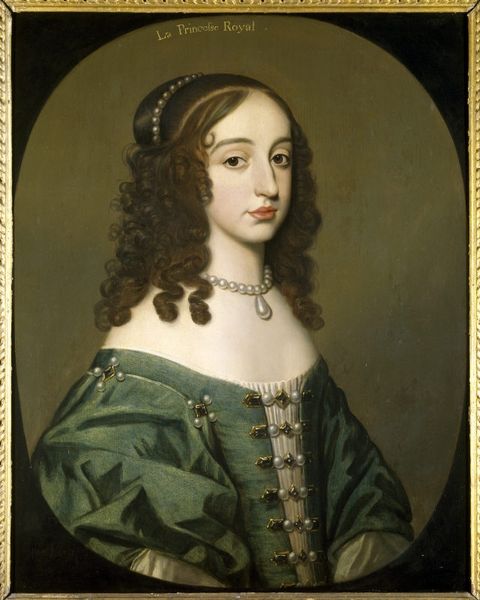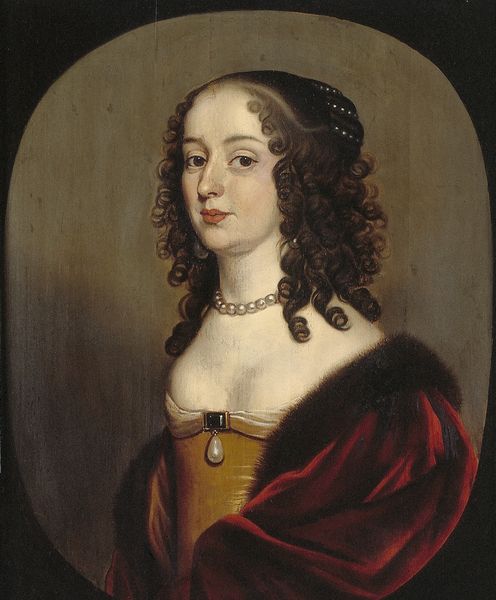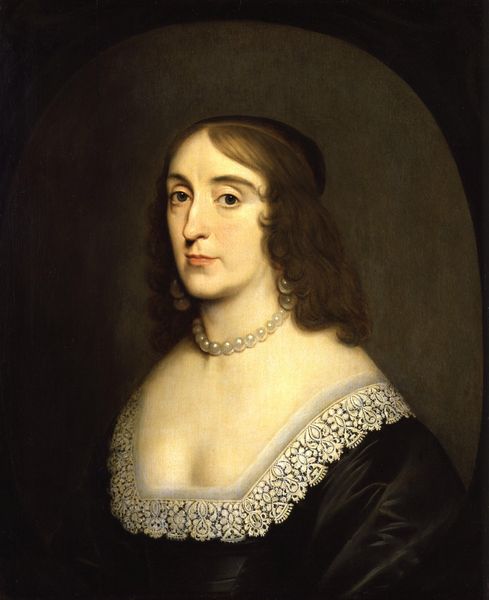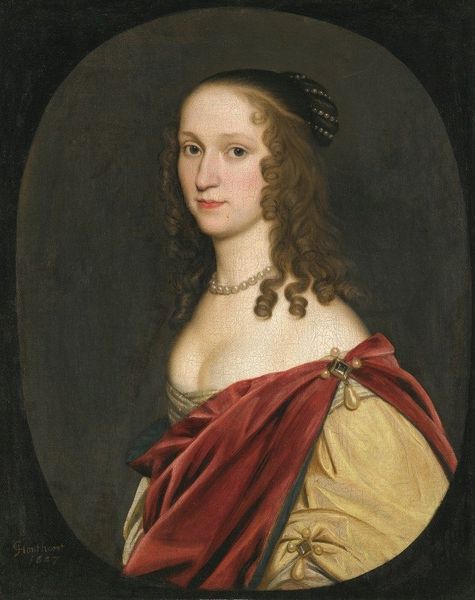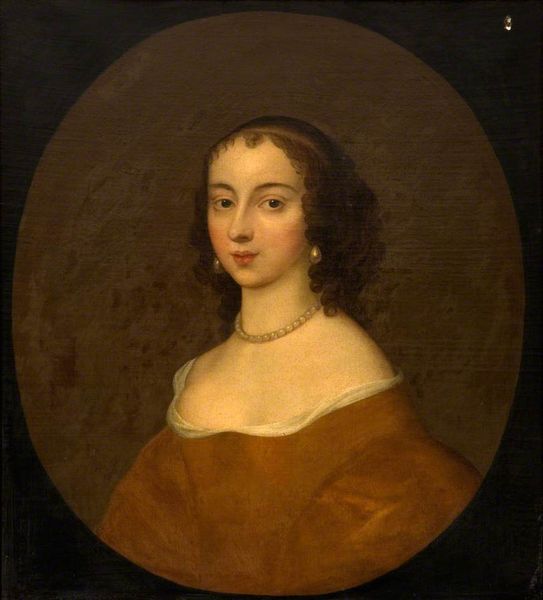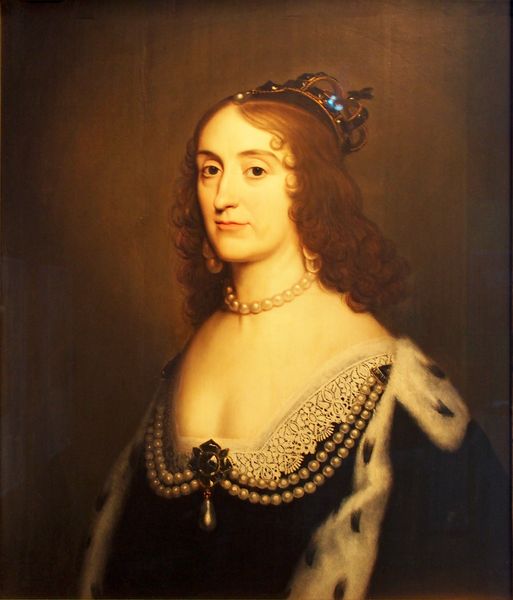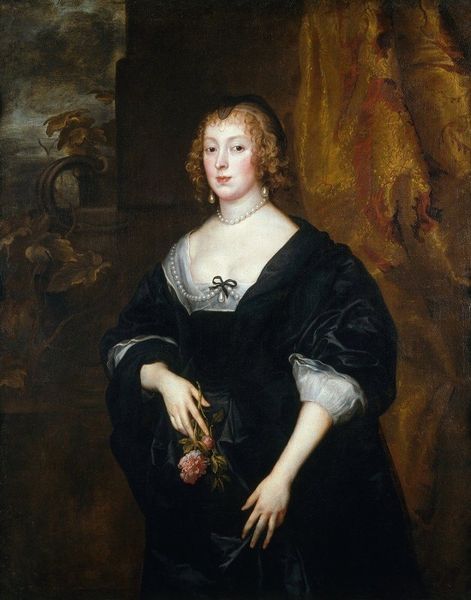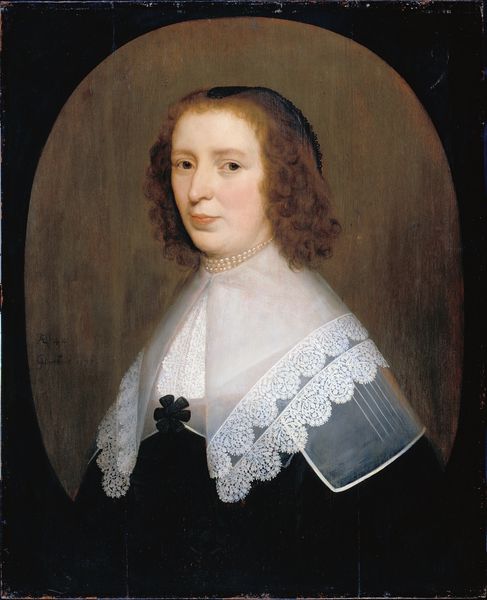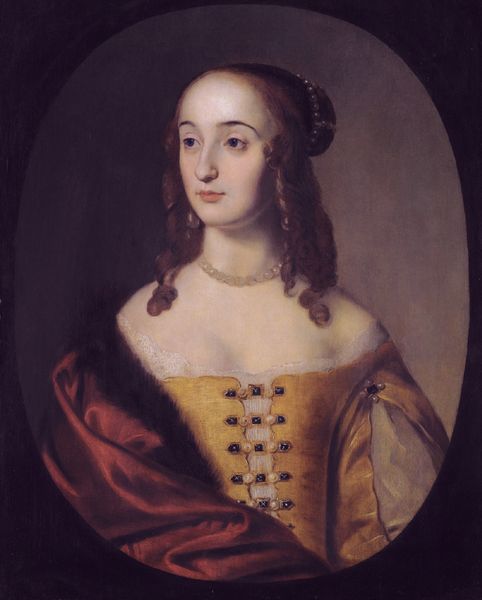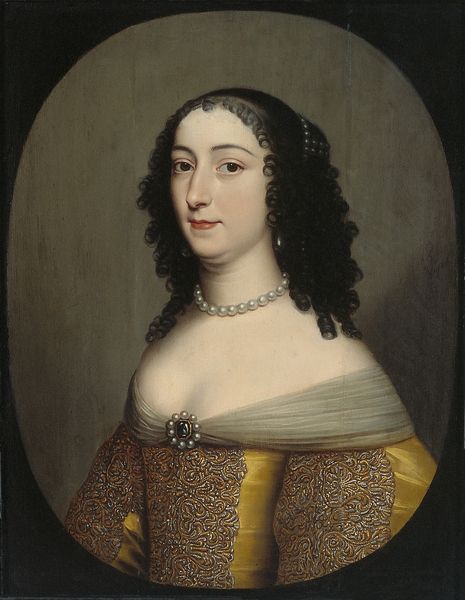
painting, oil-paint
#
portrait
#
baroque
#
painting
#
oil-paint
#
history-painting
Copyright: Public domain
Editor: This portrait, "Elizabeth, Queen of Bohemia," was painted by Gerard van Honthorst around 1650. It's an oil painting and possesses a restrained, almost melancholic air. I am curious about Honthorst’s intentions in capturing her essence. How do you interpret this work? Curator: Well, consider the pearls. They're not just adornment; they are a symbol. In many cultures, pearls represent purity, wisdom acquired through tears, and even the moon's cyclical nature. Queen Elizabeth lived a life marked by political turmoil and personal loss; perhaps Honthorst subtly hints at her resilience and inner knowledge gained from enduring hardship. What does the dark, enveloping fabric suggest to you? Editor: It feels almost funereal, doesn't it? Like a symbolic veil… Curator: Precisely! Think of veils, historically, as symbols of mourning, secrecy, or even transition between states of being. Elizabeth's choice, or perhaps Honthorst's artistic decision, subtly conveys a woman marked by circumstance, potentially alluding to her family's political exile and her own attempts to restore their royal status. Notice the way light catches the pearls versus the matte darkness of her dress. The duality reinforces this reading, what do you think? Editor: That’s fascinating, the contrasting textures enhancing that feeling of duality and stoicism in the face of difficulty. Curator: Exactly! The history painting meets a portrait with depth, and an icon laden with signs. Next time you view a Baroque portrait, remember to look for these visual cues. Editor: That really changes how I see this piece! Thanks, I've gained a whole new level of understanding.
Comments
No comments
Be the first to comment and join the conversation on the ultimate creative platform.
